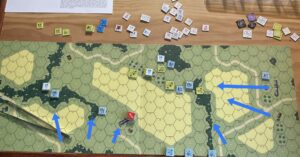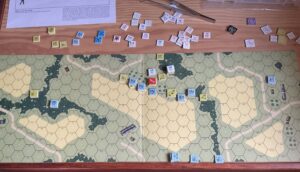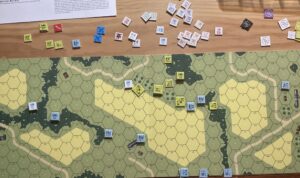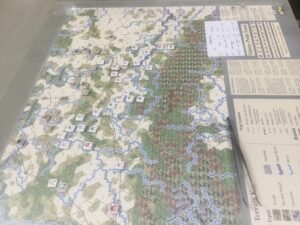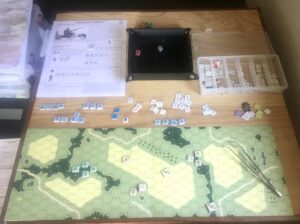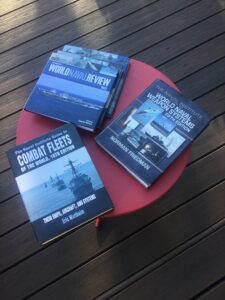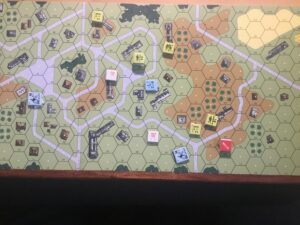Really enjoying my latest dive into ASLSK.
Set up another scenario and had quite the time.
“Over Open Sights” (S12) uses the same board and orientation as my previous game, but what a difference!
German avenues of approach have more cover and concealment, and the US has fewer units to cover these approaches. However, the US artillery is lethal in a direct fire mode….if the gun can score a hit.
I’m loathe to put together detailed session reports as they will pale in comparison to others out there. Grumble Jones is my favorite. But, this game was so exciting I had to take a few photos.
This first one involves my initial attempt to use a cheap graphics app along with a cheap iPad pencil to mark up a photo. It attempts to convey the initial positions of the Germans and their assaults, since I was already well into the game. The initial US positions can be inferred by the MG counter on the right (east) , and routed unit on the left (left).
The German advance from the southeast stalled due to effective artillery fire, but the advance from the east ( really a sprint across the open ground – the scenario takes place in December so the fields are barren) was made possible by some remarkable shooting from the 50mm mortar. Usually derided, this light mortar eliminated the machine gun crew as well as routed one artillery crew, thanks to low rolls which maintained its rate of fire, as well as abysmal morale check rolls for the US.
It was all but over by Turn 3…..or was it Turn 4? I started to pick the game up but then remembered the US received reinforcements in Turn 4. Unfortunately, I had grabbed the turn marker and couldn’t recall the turn. So, I brought in the reinforcements anyway. Things got interesting quick, because this plucky band checked the German advance. This change in fortunes was short-lived because, once again, good German shooting routed the newcomers. The following shot shows the climatic assault on the artillery (used Melee marker to emphasize).
When the smoke had cleared, the Germans had attained their objective of capturing all three artillery positions.
Fun game. Still struggling with some rules. Need to remember ELRs and that casualty reduction is to half-squads, not reduced strength squads.
